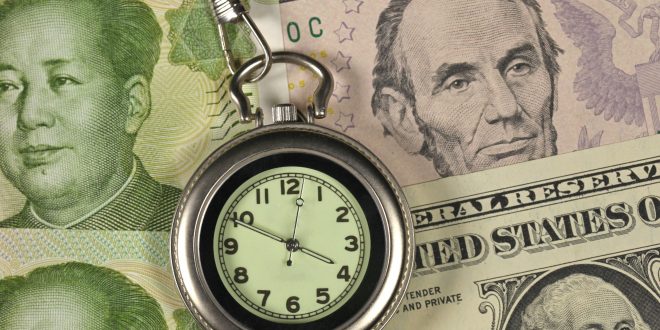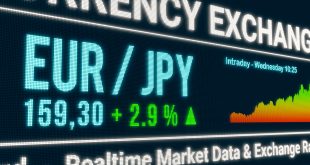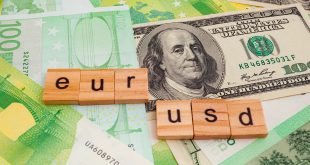Positive news regarding the launch the Vaccination campaign dominated the markets, but the Brexit crisis and the US financial stimulus still cast a shadow on the markets.
In the UK, monthly GDP continued to slow down, falling to 0.4% in October, its lowest level in 6 months. British economic output in October was 8.2% below levels recorded a year ago, a slight change from the 8.4% decline in September. Growth slowed in the three months to October to 10.2% from 15.5% in the three months to September.
The seasonally adjusted gross domestic product (GDP) expanded by 12.5% in the Q3 in the Eurozone.
On a yearly basis, the Eurozone GDP contracted by 4.3% in Q3 and came in slightly better than the market expectation for a decline of 4.4%.
BoE
The European Central Bank expanded the PEPP by another 500 billion euros and was extended until at least the end of March 2022 during its monetary policy meeting in December.
The ECB also kept the key refinancing rate at 0%. The deposit interest rate remained at a record low of -0.5%.
BoC
The Monetary Policy Committee of the Bank of Canada kept interest rates at their current levels unchanged to stabilize at 0.25% for deposit and lending, and the bank is scheduled to maintain its extraordinary guidance for the future, reinforced by the quantitative easing (QE) program, which continues at its current pace of no less than 4 Billions of dollars a week.
The BoC delivered a message of “more of the same” at its monthly policy meeting. Bank members hinted that rates would remain in ultra-low territory until the economy picked up. This stance means that we could see these rate levels for the next 2-3 years.
Canada
Industrial capacity utilization rate in Canada rose during the third quarter (Q3) of 2020, but remained at a record low level, data showed on Friday.
The capacity utilization rate reached 76.5% in Q3, rising by 5.8% on a quarterly basis, compared with its level in Q2 at 70.7%, according to Statistics Canada. This is the lowest reading for the rate level since the Q4 of 2009.
US
In the US, both headline and core inflation rose slightly, from 0.0% to 0.2%. PPI was also weak, with major and core issues coming in at negligible 0.1%.
Unemployment claims rose to 853,000 last week from 712,000. This indicates a weak job market, as the economy continues to struggle. The week ended on a positive note, as UoM consumer confidence improved to 81.4 in December, up from 77.0 previously.
The University of Michigan’s preliminary US consumer sentiment index increased by 4.5 points to 81.4 during December, from 76.9 in November, data showed on Friday.
Covid–19
A US official overseeing effort to distribute the Coronavirus vaccine said that the United States is expected to finish vaccinating 100 million people by the end of the first quarter of 2021.
Dr. Moncef Slaoui, head of the Operation Warp Speed, added, “We will complete the vaccination of 100 million people by the end of the first quarter of 2021.”
Slaoui added that the United States hopes to distribute about 40 million doses of the vaccine by the end of December and to distribute another 50 to 80 million doses in January, and the same number of doses in February.
Each person needs two doses of the vaccine to prevent the virus.
The first doses of Pfizer’s COVID-19 vaccine will arrive in Canada later on Sunday December 13th, with more of the initial batch of 30,000 arriving on Monday, according to the Canadian vaccine launch official.
Canada is expected to approve Moderna vaccine soon, and the country will be ready to accept shipments of it by the end of the week.
US
The S&P500 and Nasdaq indices closed slightly lower on Friday, December 11th, as uncertainty over the new economic stimulus weighed on sentiment, but large gains for Disney helped Dow to rally.
On a weekly basis, the Dow Jones Industrial Average lost 0.57%, the S&P 500 lost 0.96%, and the Nasdaq declined 0.69%.
The S&P 500 and Nasdaq posted their biggest weekly losses since the end of October.
Disney shares were the biggest supporter of Dow Jones and S&P 500, rising 13.59% after the company announced a raft of new offers for its digital services and said it expects up to 350 million subscribers from around the world by the end of fiscal year 2024.
Europe
European stocks fell on Friday, December 11th, ending a hectic week of decline on concerns about the economic impact of the resurgence of the COVID-19 pandemic, and the fate of the trade deal linked to Brexit.
The pan-European STOXX 600 index fell 0.8%, extending losses after a negative economic outlook for 2021 from ECB pushed it down on Thursday.
The index broke a five-week winning streak, dropping 1% this week, in light of the faltering talks between the European Union and Britain, which raised the chances of Britain leaving the bloc without a trade deal.
The main Spanish index, which constitutes bank stocks, lost 1.5%, while the FTSE 100 index fell in London for the first time in nine sessions.
The decline of the pharmaceutical company, Sanofi, 4%, was the biggest impact, after it said that the possible Covid-19 vaccine that it developed with GlaxoSmithKline showed an insufficient immune response in clinical trials.
The telecom sector in Europe lost 2.8%, its worst daily performance in more than ten weeks.
Oil
Oil prices were settled down on Friday, December 11th, as demand concerns due to new coronavirus-related restrictions on business in New York overshadowed progress in vaccination programs.
Brent futures fell 28 cents, or 0.6%, to settle at $ 49.97 a barrel. The contract exceeded $ 51 a barrel on Thursday, its highest since March.
US West Texas Intermediate crude fell 21 cents, or 0.5%, to $ 46.57 a barrel, after increasing by about 3% in the previous session.
This came at a time when New York Governor Andrew Como ordered restaurants to prevent eating inside from Monday, in light of the increase in the number of cases.
On a weekly basis, Brent is up 1.5%, and West Texas Intermediate is up 1%. It was the sixth consecutive weekly increase for the first time since June.
Gold
Gold rose today, Friday, as the dollar stood near its lowest level in two and a half years, dispelling fears about delaying a US stimulus package to ease the repercussions of the Corona virus.
And gold rose in immediate trading 0.1% to 1837.21 dollars an ounce. And gold in US futures was 0.2 percent to $ 1841.50.
The dollar index is down 0.2% and is trading near 90.5, the lowest level since April 2018, which reduces the cost of gold to holders of other currencies.
Data on Thursday showed that US jobless claims jumped to near the highest level in three months, in yet another evidence that the high incidence of COVID-19 and the lack of additional financial stimulus are hurting the economy.
Gold is seen as a hedge against inflation and a depreciating currency.
As for the other precious metals, silver settled at $ 23.94 an ounce, and palladium rose 1 percent to $ 2,353.73.
Platinum rose 0.1% to $ 1,027.76, but is heading down 2.5 percent this week.
 Noor Trends News, Technical Analysis, Educational Tools and Recommendations
Noor Trends News, Technical Analysis, Educational Tools and Recommendations





